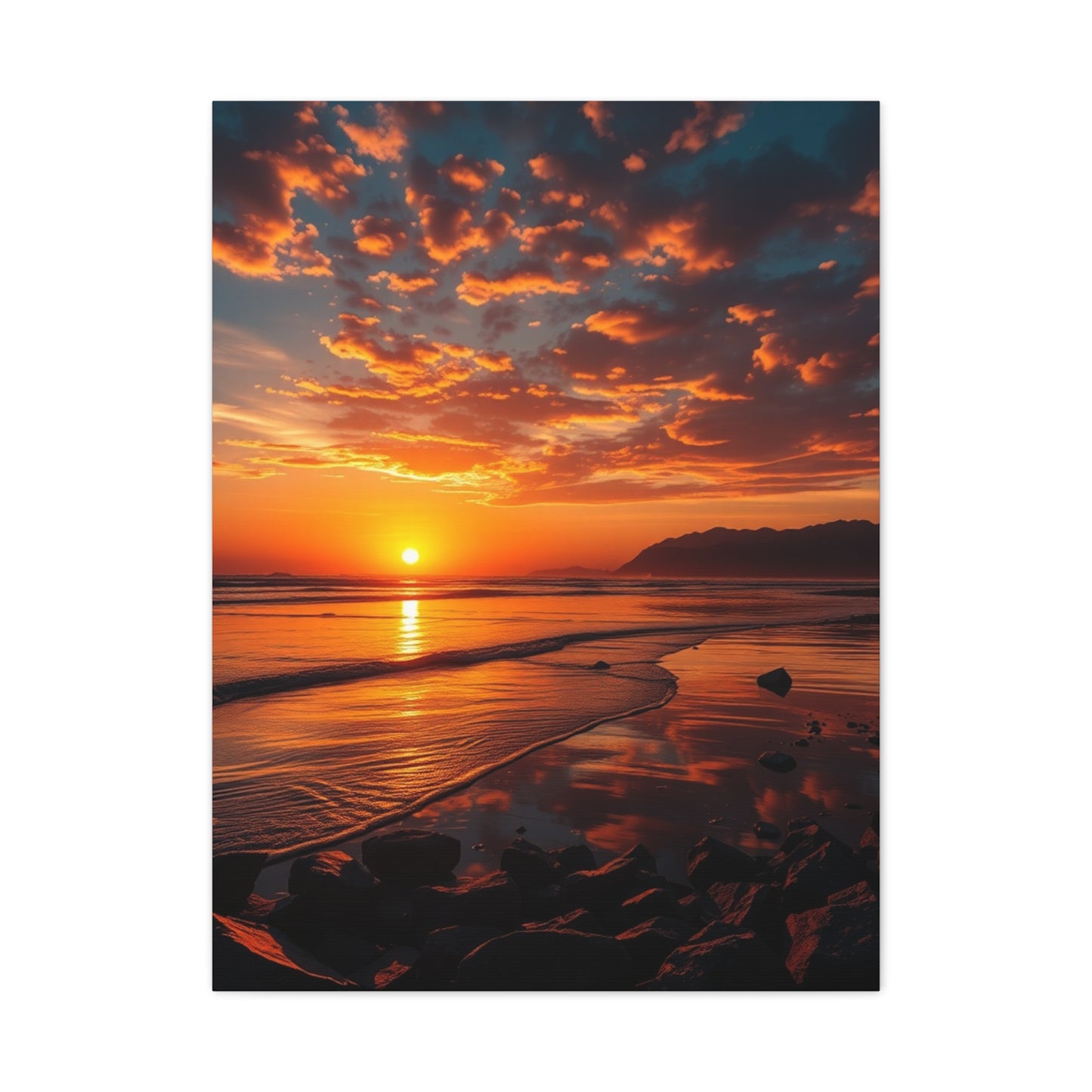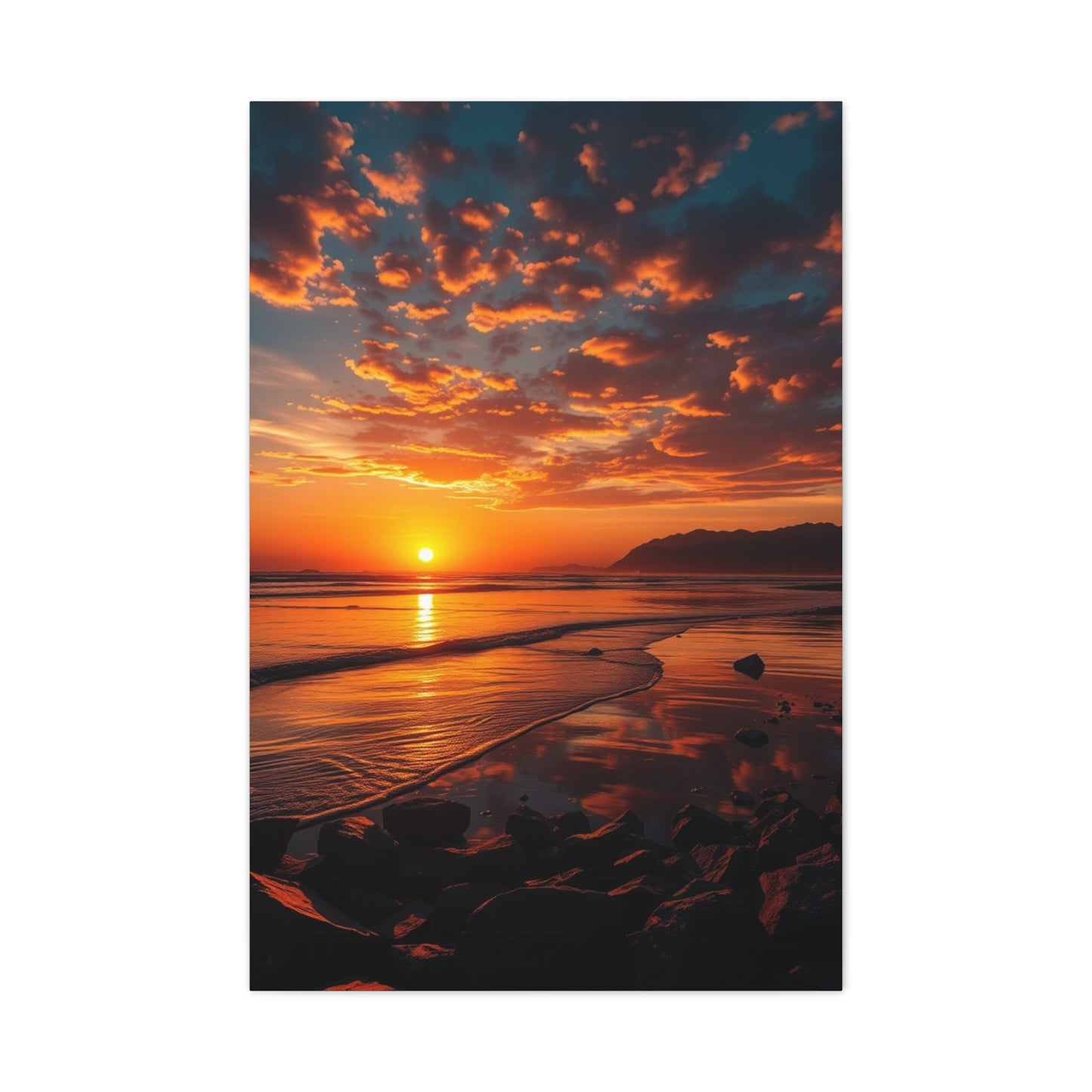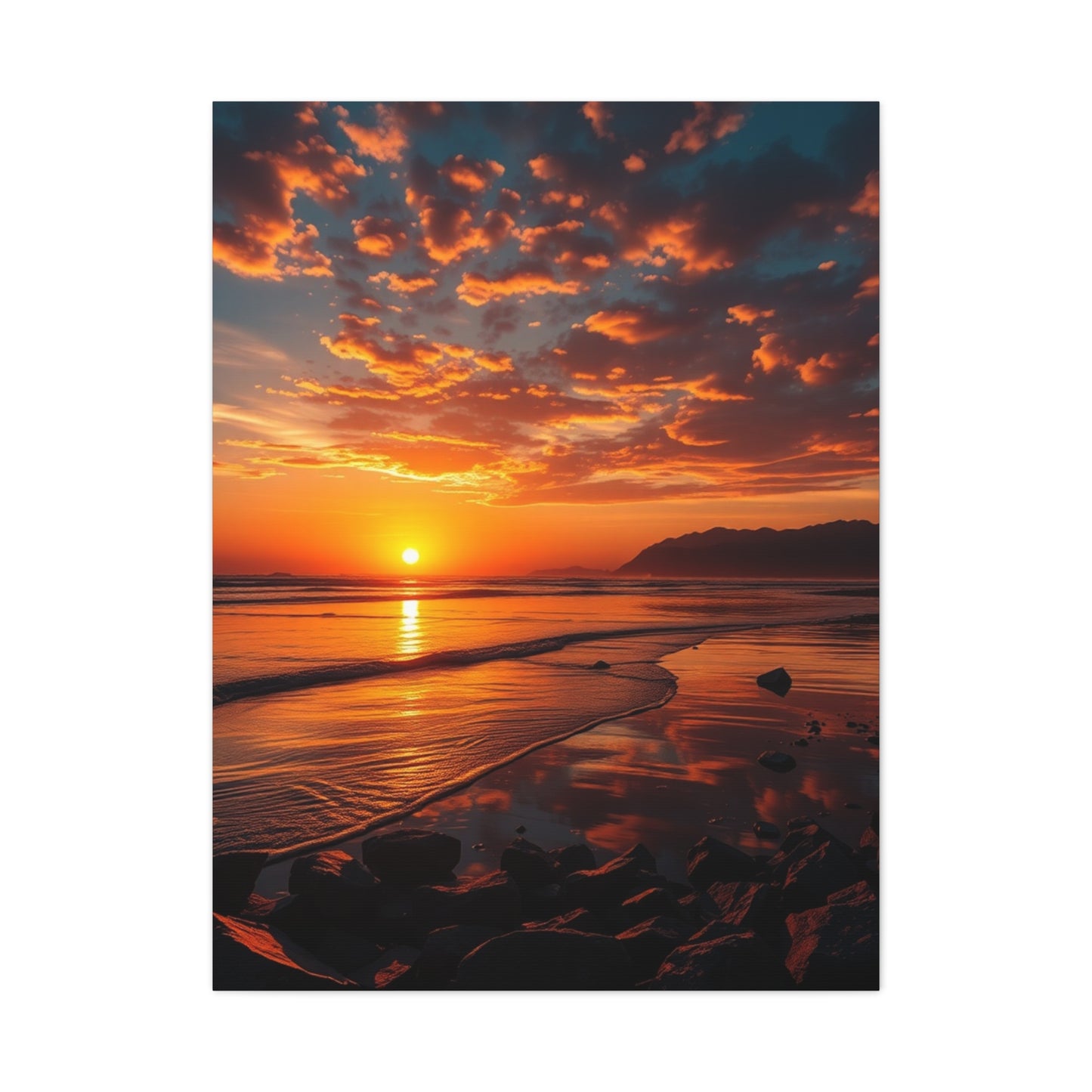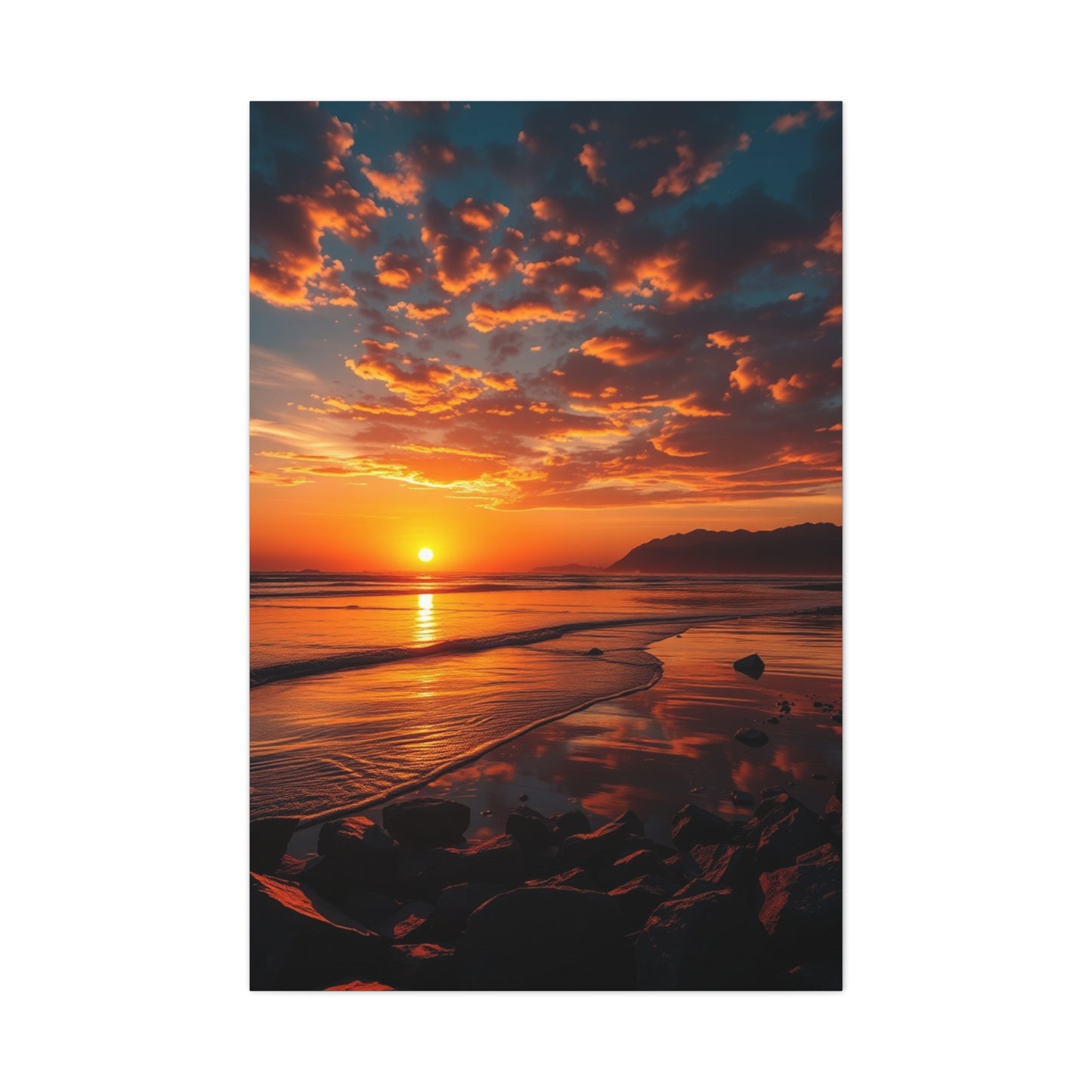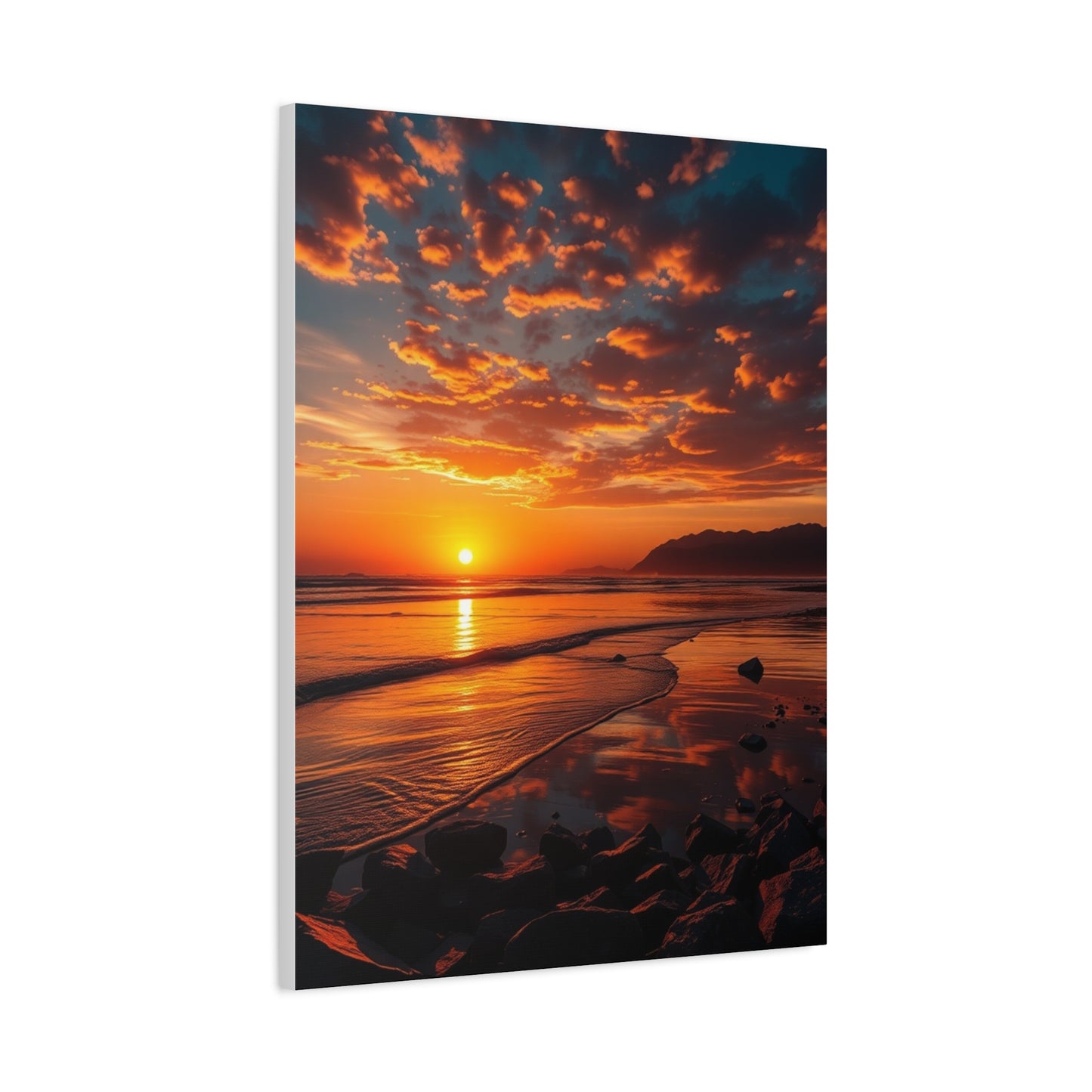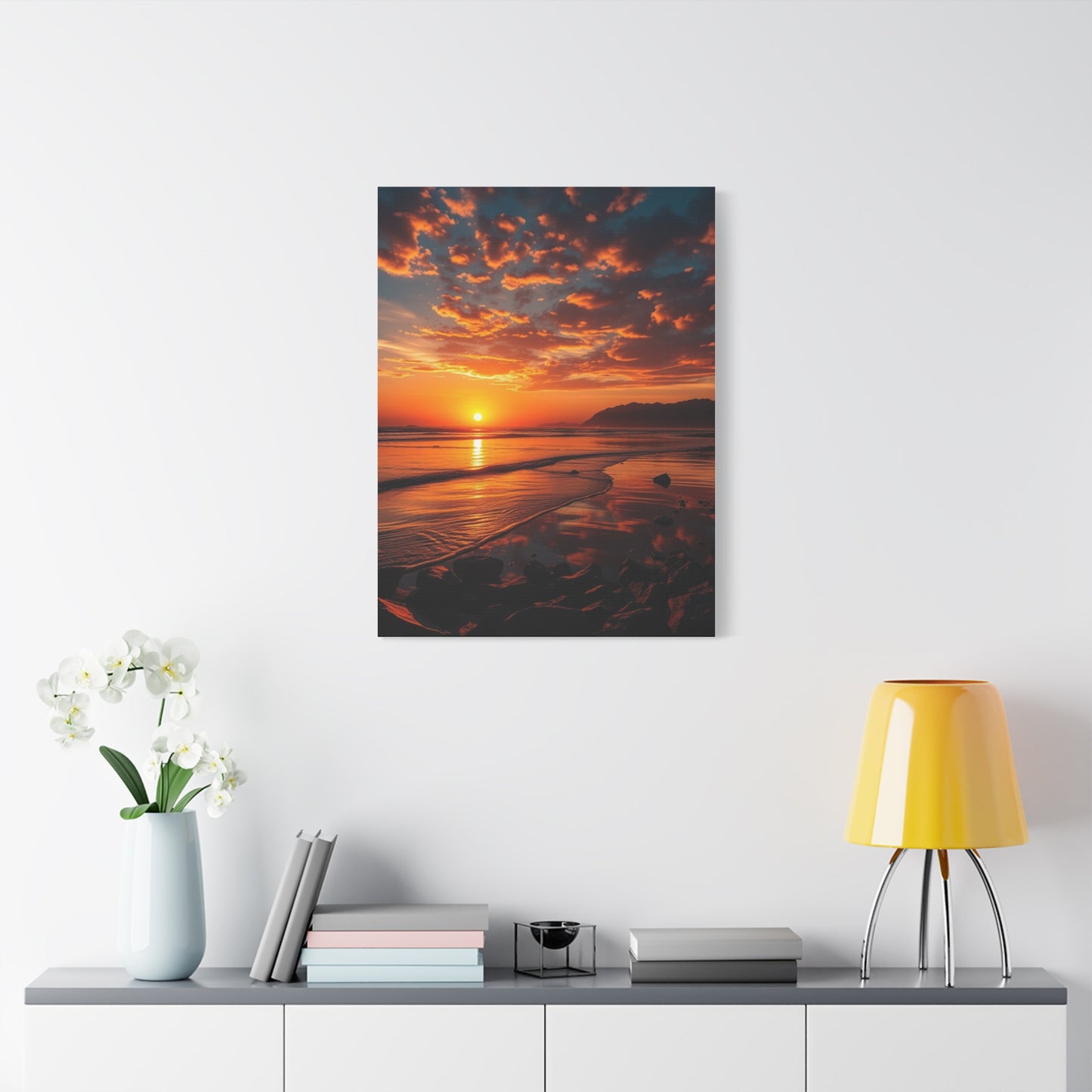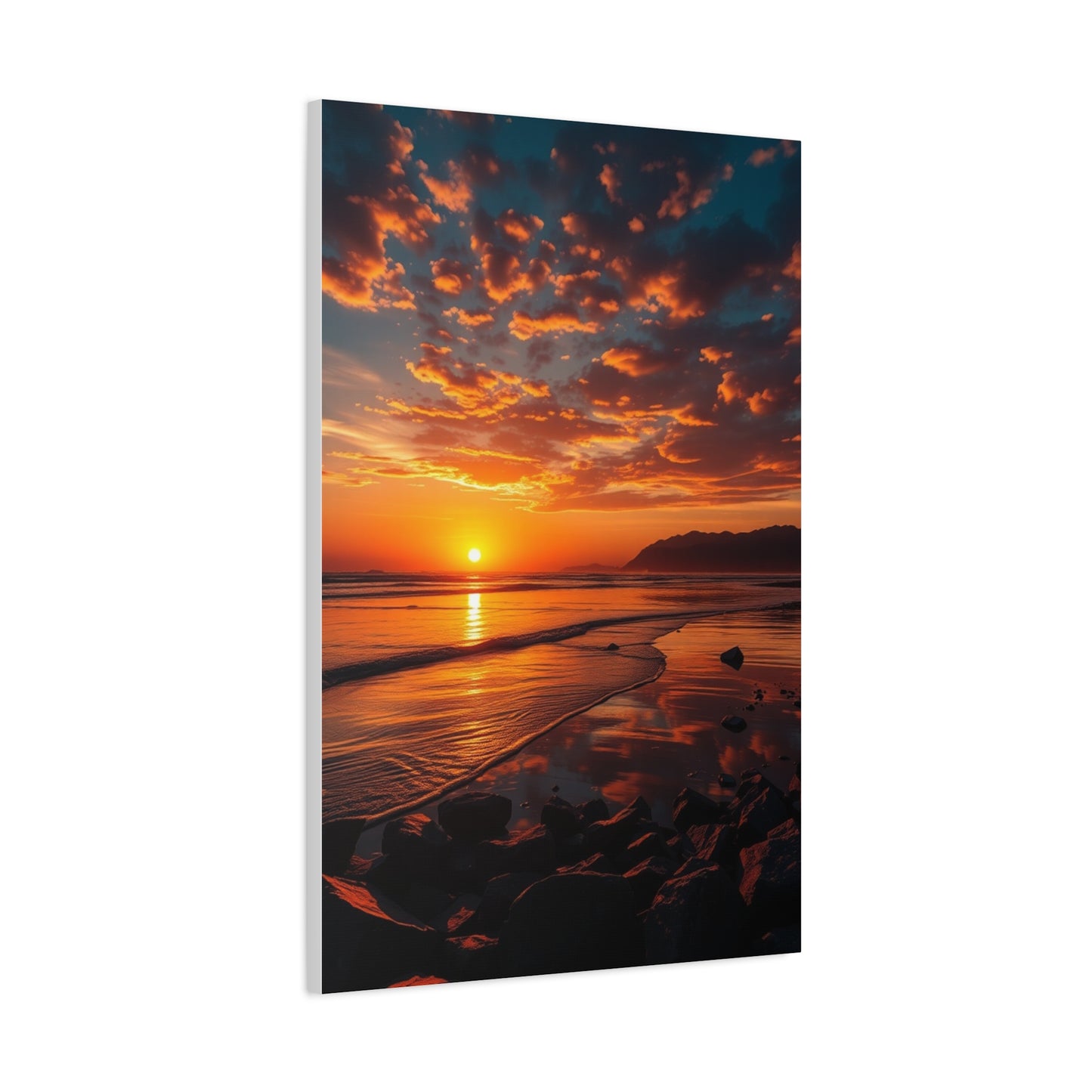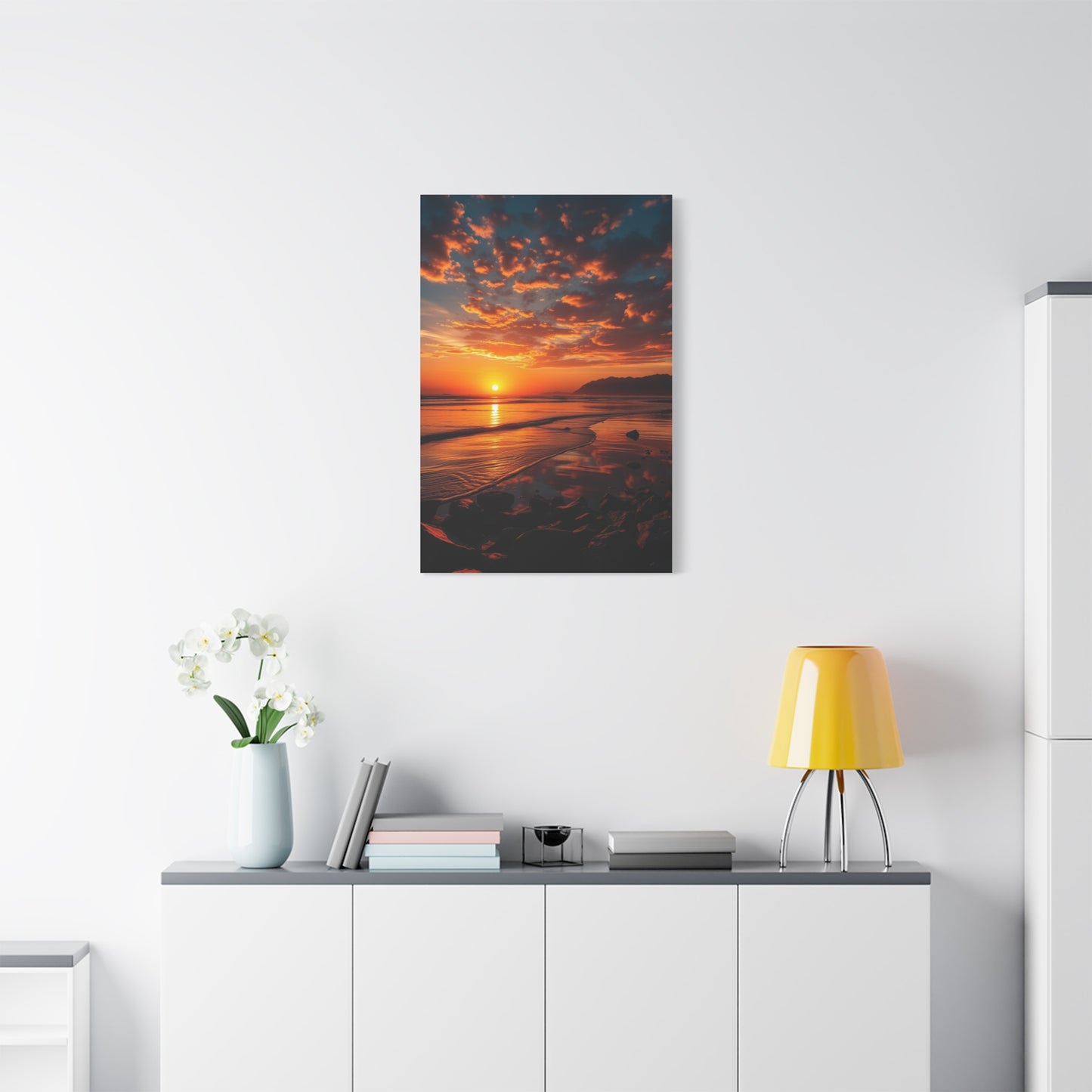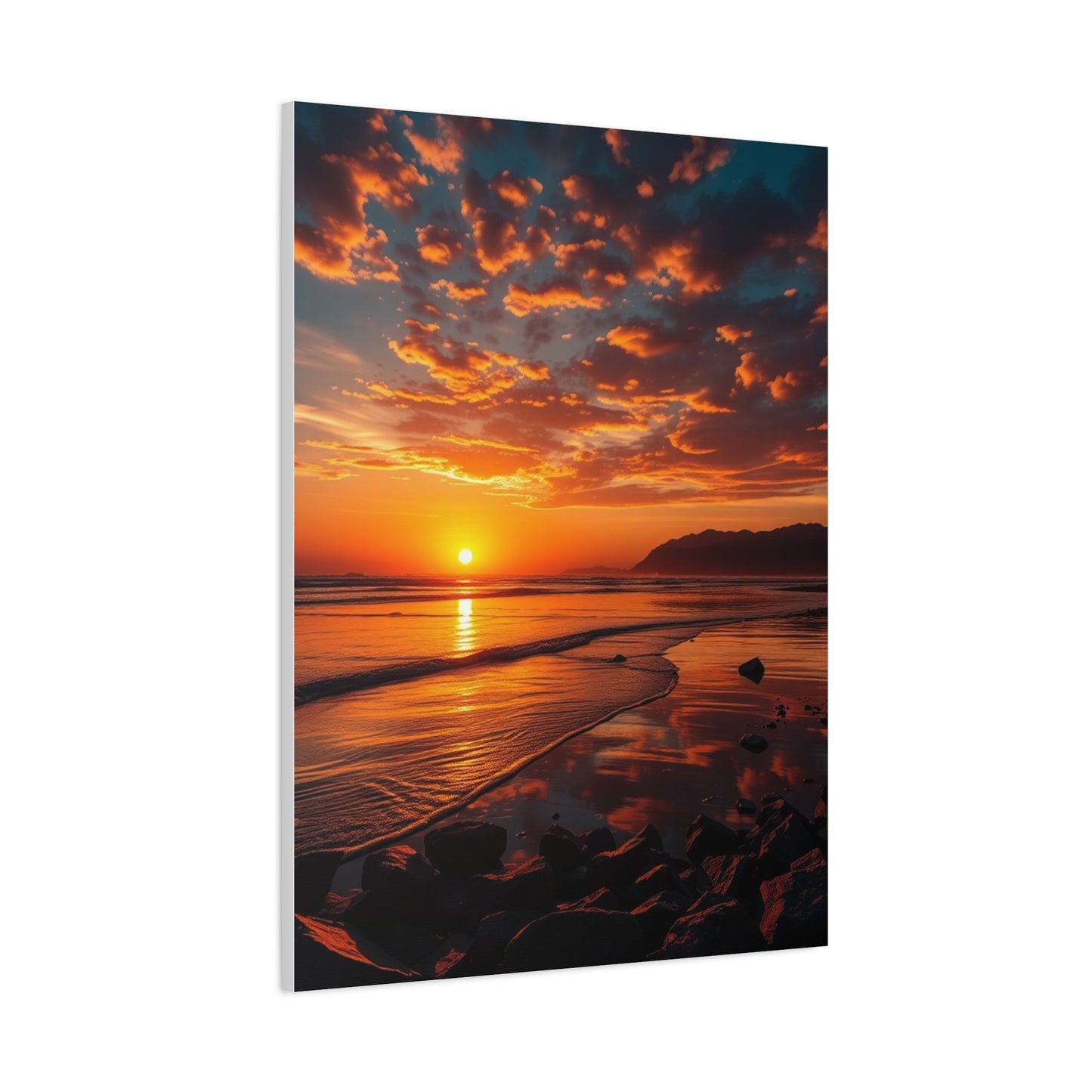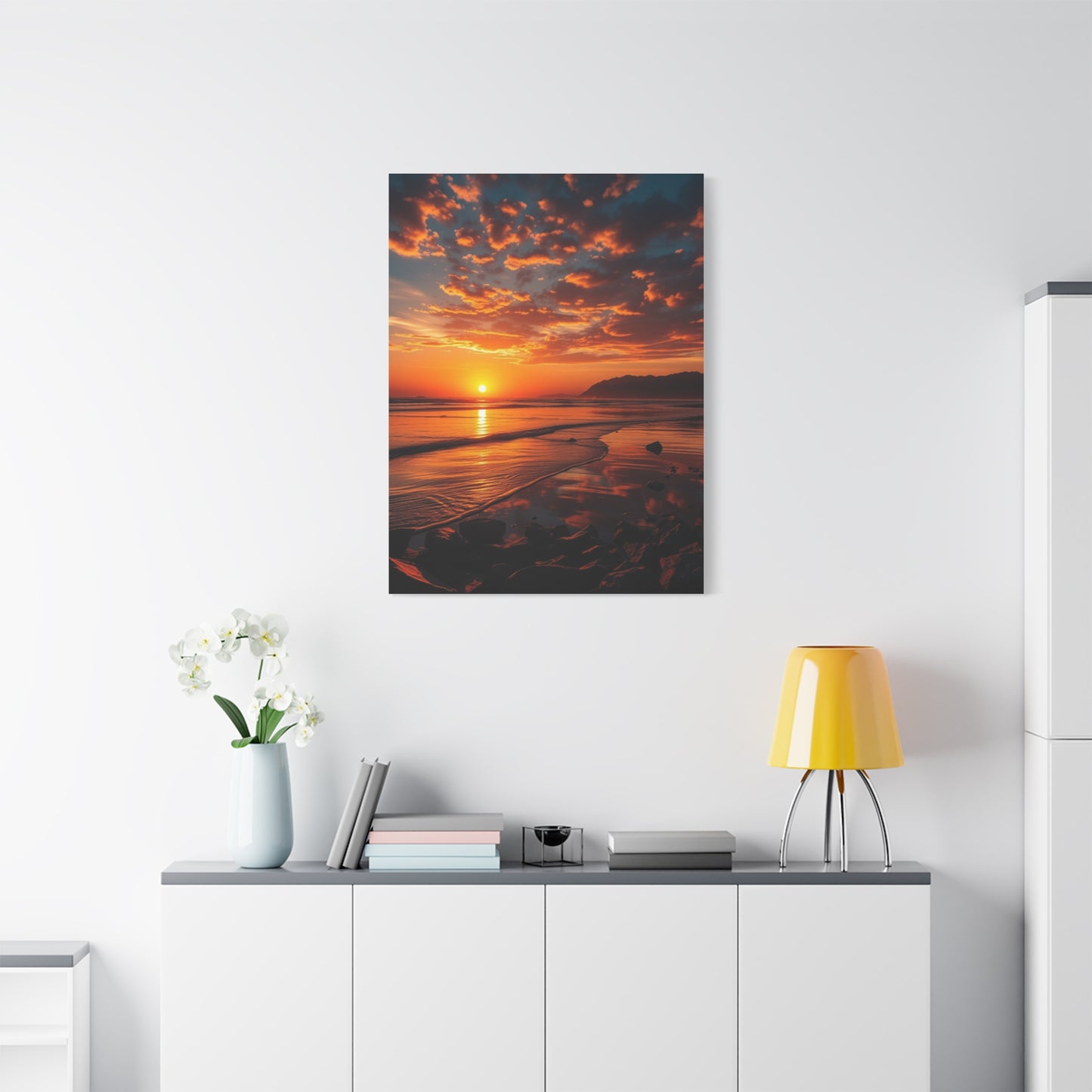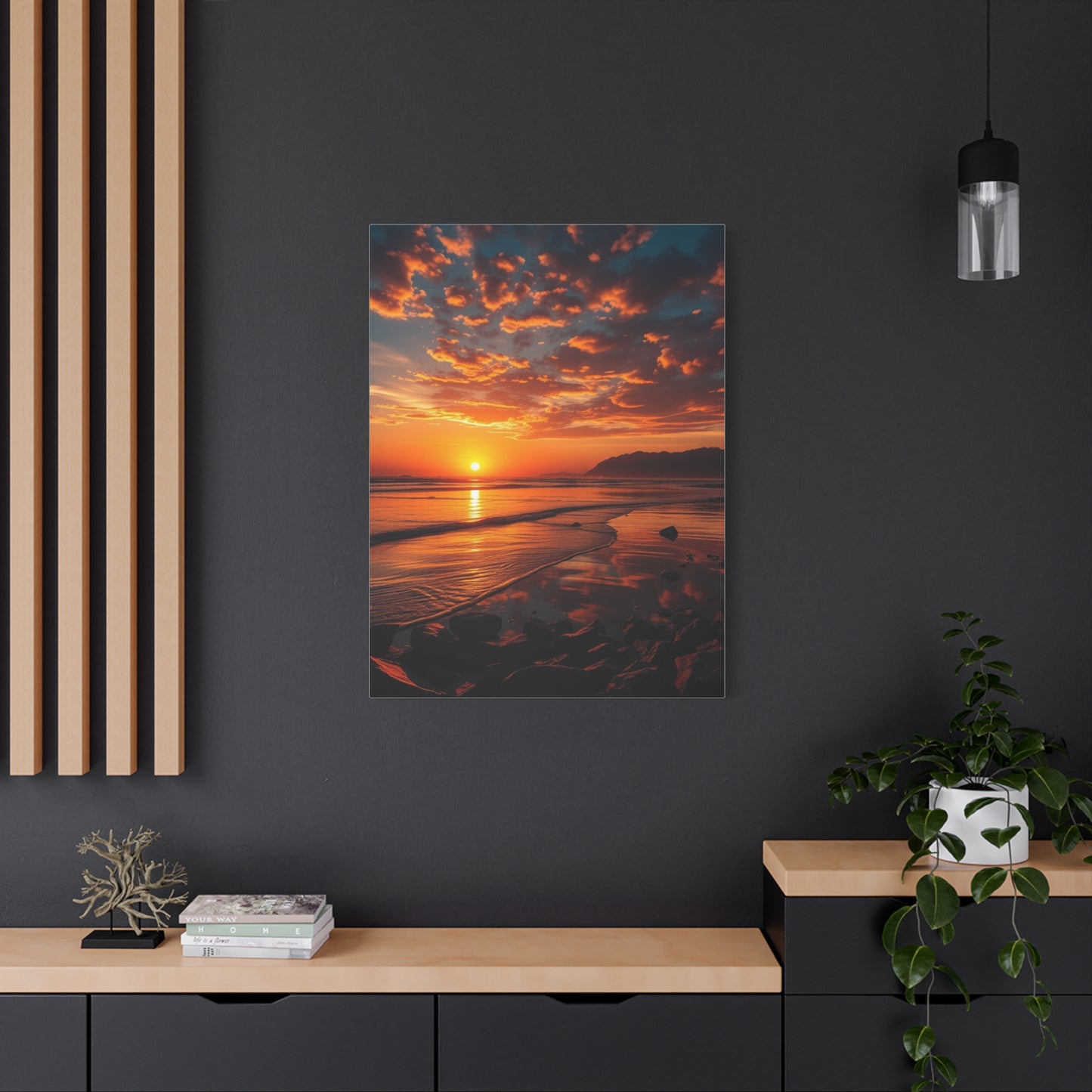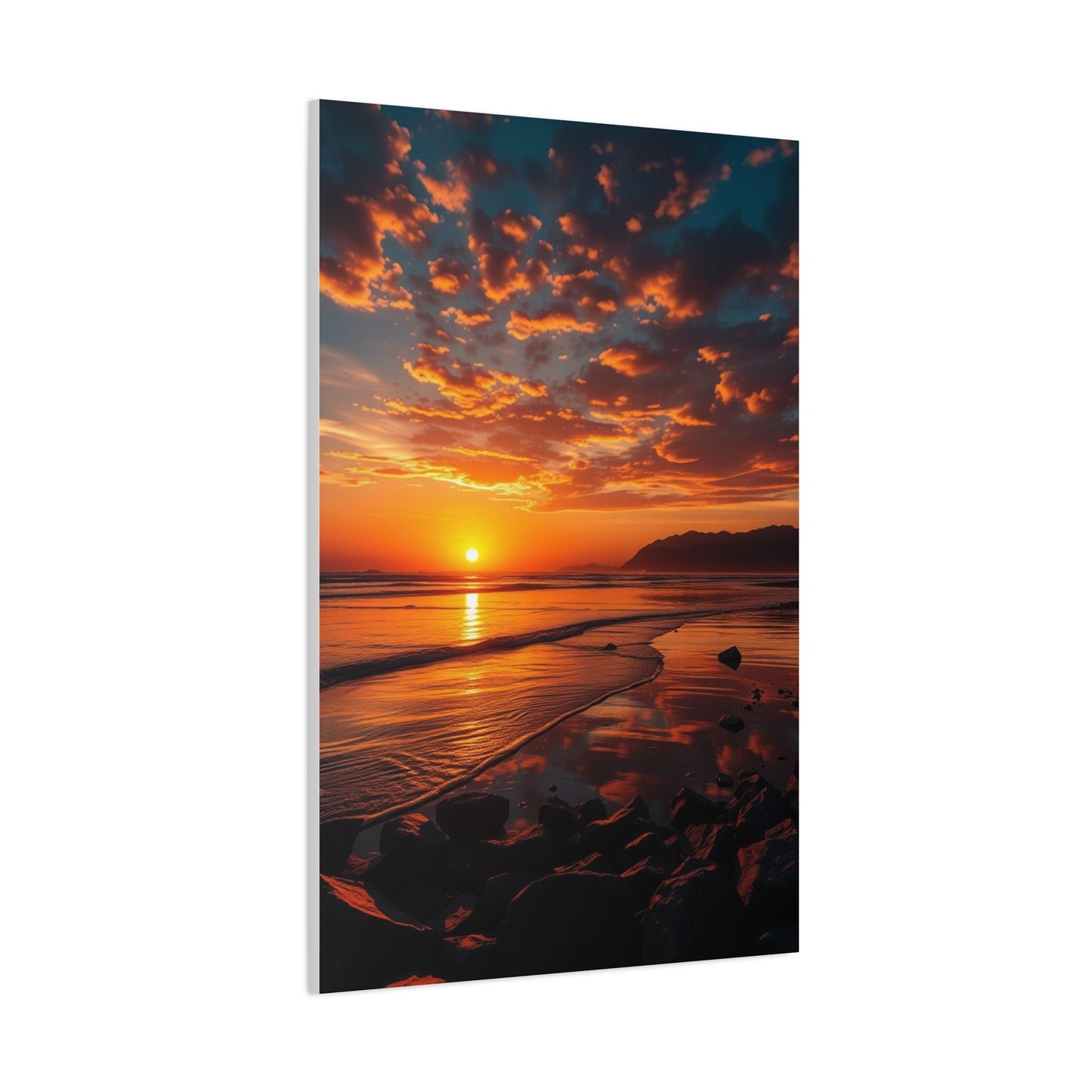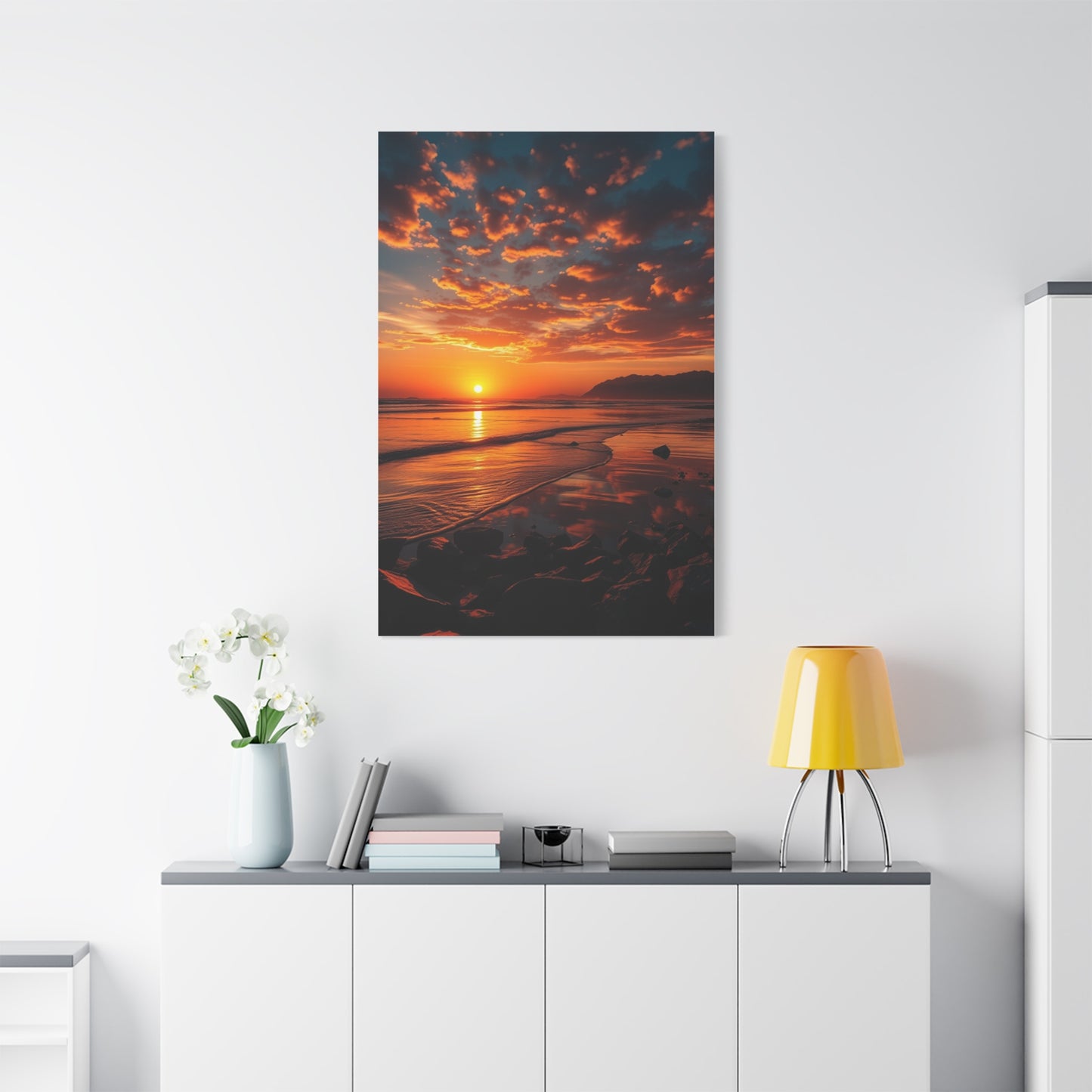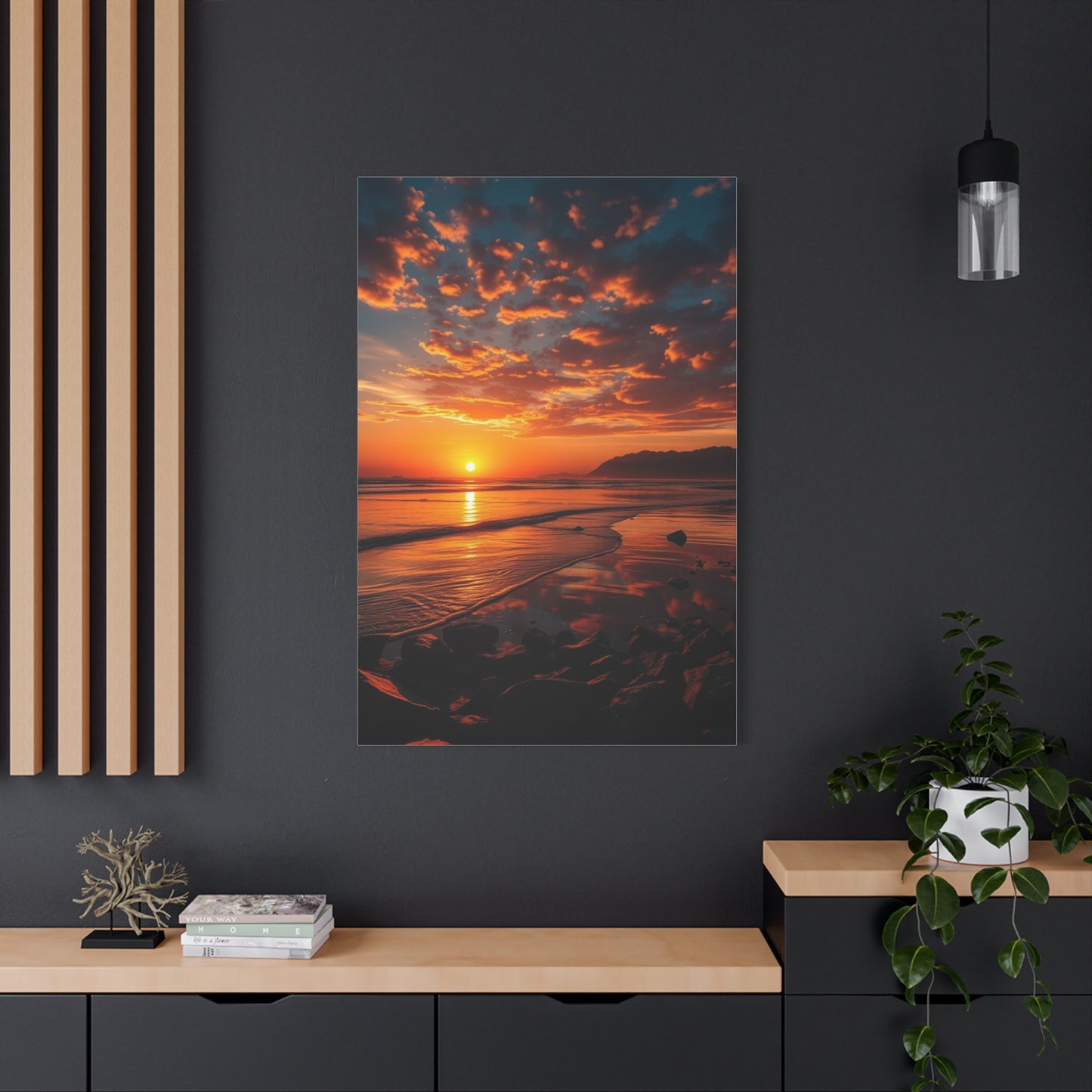Aurora Twilight Elegance: The Complete Guide to Nature's Most Mesmerizing Phenomenon
The captivating beauty of aurora twilight elegance represents one of nature's most spectacular displays, combining the ethereal glow of twilight hours with the magnificent dance of auroral lights. This extraordinary phenomenon occurs when the gentle transition between day and night coincides with geomagnetic activity in Earth's upper atmosphere, creating a breathtaking visual symphony that has inspired countless generations. The term aurora twilight elegance encompasses not merely the scientific aspects of these celestial events but also captures the profound emotional and aesthetic impact they have on observers worldwide. Throughout history, civilizations have gazed upward during these magical moments, finding inspiration in the graceful movements and vibrant colors that paint the sky.
The elegance inherent in these displays stems from the perfect harmony between natural forces, atmospheric conditions, and the precise timing that allows twilight's soft illumination to blend seamlessly with the auroral curtains. Understanding aurora twilight elegance requires exploring multiple dimensions, from the physical mechanisms that generate these lights to the cultural significance they hold across different societies. This phenomenon demonstrates nature's remarkable ability to create beauty through complex interactions between solar particles, Earth's magnetic field, and atmospheric gases, all occurring at precisely the right moment when twilight provides the ideal backdrop for observation.
The Scientific Foundation Behind Aurora Twilight Elegance
The science underlying aurora twilight elegance involves intricate interactions between solar wind, Earth's magnetosphere, and atmospheric composition. When charged particles from the sun collide with gases in Earth's atmosphere, typically at altitudes between 60 and 200 miles above the surface, they energize oxygen and nitrogen molecules, causing them to emit light in various colors. During twilight hours, this process becomes particularly visible because the sky retains enough darkness to showcase the auroral displays while maintaining sufficient ambient light to reveal subtle color variations and structural details that might be lost in complete darkness. The elegance of these displays during twilight stems from the reduced solar glare that would otherwise overwhelm the delicate auroral emissions during daylight hours.
Scientists have extensively studied how different atmospheric conditions, solar activity levels, and seasonal variations contribute to the intensity and appearance of aurora twilight elegance. The geomagnetic field plays a crucial role by channeling solar particles toward polar regions, where auroral activity concentrates most intensely. During periods of heightened solar activity, such as during solar storms or coronal mass ejections, the frequency and intensity of auroral displays increase dramatically, creating more opportunities to witness aurora twilight elegance. The specific colors observed depend on which atmospheric gases are being excited and at what altitude the collisions occur, with oxygen producing green and red hues while nitrogen generates blue and purple tones.
Geographical Locations for Experiencing Aurora Twilight Elegance
Experiencing aurora twilight elegance requires traveling to specific geographical locations where auroral activity occurs with sufficient frequency and intensity. The auroral oval, an elliptical zone surrounding Earth's magnetic poles, represents the primary region where these displays manifest most regularly. Within the northern hemisphere, territories such as Alaska, northern Canada, Iceland, northern Scandinavia, and parts of Russia offer exceptional opportunities for witnessing aurora twilight elegance. These locations fall within or near the auroral zone, typically between 60 and 75 degrees latitude, where geomagnetic activity generates frequent displays throughout the darker months.
The southern hemisphere also experiences auroral phenomena, though fewer populated areas exist at appropriate latitudes for convenient observation. Tasmania, southern New Zealand, Antarctica, and the southern tip of South America occasionally witness southern auroral displays during twilight hours. The accessibility of northern locations has made them more popular destinations for those seeking to experience aurora twilight elegance firsthand. Each geographical region offers unique advantages, with some providing better infrastructure, clearer skies, or distinctive landscape features that enhance the overall experience. Coastal areas, mountain regions, and vast open spaces away from light pollution all serve as excellent vantage points for observing these celestial performances.
Optimal Timing and Seasonal Considerations for Aurora Twilight Elegance
The timing and seasonal factors significantly influence opportunities to witness aurora twilight elegance, with certain periods offering substantially better chances than others. In polar regions, the extended darkness during winter months initially seems ideal for auroral observation, but the brief twilight periods limit opportunities to catch that specific combination of auroral activity and twilight illumination. Conversely, the equinox periods in spring and autumn provide particularly favorable conditions because twilight duration extends sufficiently while nights remain dark enough for auroral visibility. During these transitional seasons, the angle of Earth's magnetic field relative to solar wind also creates conditions that enhance geomagnetic activity.
The hours immediately following sunset and preceding sunrise represent prime times for experiencing aurora twilight elegance, when the sky darkens sufficiently to reveal auroral displays while retaining enough ambient light to illuminate landscape features and provide depth perception. Solar activity follows an approximately eleven-year cycle, with peak activity during solar maximum increasing auroral frequency even at lower latitudes. Monitoring space weather forecasts and geomagnetic indices helps enthusiasts identify optimal viewing opportunities. Cloud cover, local weather patterns, and atmospheric clarity also impact visibility, making weather forecasting an essential component of planning successful aurora twilight elegance observations.
The Color Spectrum and Visual Characteristics of Aurora Twilight Elegance
The visual characteristics of aurora twilight elegance encompass a remarkable spectrum of colors, patterns, and movements that distinguish these displays from other atmospheric phenomena. Green represents the most commonly observed color, produced when solar particles collide with oxygen molecules at altitudes around 60 to 150 miles above Earth's surface. This verdant glow often forms the base layer of auroral displays, creating luminous curtains that ripple and undulate across the sky. At higher altitudes, typically above 150 miles, oxygen emissions shift toward red hues, though these require darker conditions for visibility and appear less frequently during twilight hours. Nitrogen contributes blue and purple tones, particularly at lower altitudes where atmospheric density increases.
During twilight, the interplay between these natural auroral colors and the residual sunlight creates unique blending effects not observable during deeper darkness. The structural forms of aurora twilight elegance vary dramatically, from diffuse glows spreading across large portions of sky to well-defined arcs, bands, and curtains with sharp lower edges. Dynamic displays feature rapid movements, with auroral curtains appearing to dance, pulse, and swirl in response to fluctuations in solar wind and geomagnetic conditions. Corona formations occur when auroral rays converge toward a point directly overhead, creating a spectacular crown-like appearance.
Photography Techniques for Capturing Aurora Twilight Elegance
Photographing aurora twilight elegance presents unique challenges and opportunities that distinguish it from capturing auroras during complete darkness. The residual light during twilight hours provides sufficient illumination to capture foreground landscape elements without requiring extremely long exposures, creating more balanced compositions that showcase both celestial and terrestrial beauty. Camera settings must balance the need to capture relatively dim auroral emissions while preventing overexposure of the brighter twilight sky. Wide-angle lenses with fast apertures, typically ranging from f/1.4 to f/2.8, allow maximum light gathering capability essential for auroral photography. ISO settings between 800 and 3200 generally provide adequate sensitivity while maintaining acceptable noise levels, though modern cameras with excellent high-ISO performance allow even greater flexibility.
Exposure duration requires careful consideration during twilight, with shorter times between five and fifteen seconds often sufficient compared to the twenty to thirty-second exposures common during darker conditions. Tripod stability remains absolutely essential, as any movement during exposure ruins image sharpness. Manual focus set to infinity ensures sharp auroral features, though some photographers prefer focusing on distant landscape elements to maintain sharpness throughout the entire frame. Composition techniques for aurora twilight elegance often incorporate interesting foreground elements such as mountains, trees, bodies of water, or architectural features that add context and scale to the celestial display.
Cultural Significance and Historical Perspectives on Aurora Twilight Elegance
Throughout human history, aurora twilight elegance has profoundly influenced cultures, mythologies, and spiritual beliefs across numerous civilizations. Indigenous peoples inhabiting polar regions developed rich traditions and interpretations surrounding auroral displays, often viewing them as manifestations of ancestral spirits, divine messages, or supernatural beings. Some cultures regarded the lights as omens portending significant events, while others celebrated them as positive signs of prosperity and good fortune. The elegance and beauty of these displays inspired artistic expressions ranging from oral traditions and stories passed through generations to visual representations in various media.
Ancient Norse mythology associated auroral lights with the Valkyries, believing these warrior maidens created the shimmering displays as they rode across the sky selecting fallen heroes for Valhalla. Indigenous peoples of northern North America held diverse interpretations, with some viewing the lights as spirits playing games, others seeing them as torches carried by departed souls, and still others understanding them as bridges between earthly and spiritual realms. Chinese records dating back thousands of years document observations of unusual sky phenomena that modern scholars interpret as auroral sightings at unusually low latitudes during periods of intense solar activity. European medieval chronicles occasionally mention strange lights in northern skies, though without understanding their true nature.
The Relationship Between Solar Activity and Aurora Twilight Elegance
Solar activity serves as the fundamental driver behind aurora twilight elegance, with variations in the sun's behavior directly influencing the frequency, intensity, and geographical extent of auroral displays. The sun continuously emits a stream of charged particles known as solar wind, which flows outward through the solar system at speeds typically ranging from 200 to 500 miles per second. Under normal conditions, this steady flow generates moderate levels of geomagnetic activity and produces auroral displays primarily confined to high-latitude regions. However, the sun periodically releases massive bursts of plasma and magnetic field in events called coronal mass ejections, which can dramatically amplify auroral activity when directed toward Earth.
Solar flares, intense bursts of radiation from the sun's surface, often accompany coronal mass ejections and serve as indicators of heightened solar activity. The sun's magnetic field undergoes a complete reversal approximately every eleven years, a cycle that correlates with variations in solar activity levels. During solar maximum, when sunspot numbers peak and solar activity reaches its highest levels, coronal mass ejections occur more frequently, creating enhanced opportunities for experiencing aurora twilight elegance even at mid-latitude locations. Conversely, during solar minimum, auroral activity diminishes and displays concentrate closer to the poles.
Atmospheric Science and the Formation of Aurora Twilight Elegance
The atmospheric science behind aurora twilight elegance involves complex processes occurring in Earth's upper atmosphere, particularly within the ionosphere and thermosphere layers. When charged particles from solar wind penetrate Earth's magnetic field, they typically enter the atmosphere near the magnetic poles, where field lines converge and guide particles downward. As these particles descend through progressively denser atmospheric layers, they encounter increasing numbers of atmospheric gas molecules. The collisions between charged particles and atmospheric gases transfer energy to the gas molecules, exciting their electrons to higher energy states. When these excited electrons return to their normal states, they release the absorbed energy as photons of light, creating the visible glow characteristic of auroral displays.
The specific wavelengths of emitted light depend on which gases are involved and the energy levels of the interactions. Oxygen molecules produce the characteristic green emission at 557.7 nanometers, the most common auroral color, while also generating red emissions at 630 nanometers under appropriate conditions. Nitrogen contributes blue and purple hues through different emission mechanisms. During twilight hours, the residual sunlight scattering through the atmosphere creates a luminous background that must be considered when observing and photographing aurora twilight elegance. The transition zone between day and night produces atmospheric conditions where the contrast between auroral emissions and sky background reaches an optimal balance.
Equipment and Preparation for Observing Aurora Twilight Elegance
Proper equipment and thorough preparation significantly enhance the experience of observing aurora twilight elegance while ensuring comfort and safety during extended outdoor viewing sessions. Warm, layered clothing forms the foundation of appropriate gear, as observing sessions often occur in extremely cold environments where temperatures can plummet well below freezing. Insulated boots, thermal gloves, and head coverings protect extremities from cold exposure while allowing sufficient mobility and dexterity for operating camera equipment or binoculars. A reliable flashlight with red-light mode preserves night vision adaptation while providing necessary illumination for navigating unfamiliar terrain or adjusting equipment.
Portable seating options such as folding chairs or insulated pads allow comfortable extended viewing sessions without constant standing. For photography enthusiasts, a sturdy tripod forms the most critical piece of equipment after the camera itself, enabling sharp long-exposure images. Extra batteries maintain camera operation despite cold temperatures that rapidly drain battery power, while memory cards with ample storage capacity prevent running out of space during active displays. Smartphone applications providing real-time auroral forecasts, geomagnetic indices, and sky maps help observers maximize their chances of witnessing aurora twilight elegance. Some observers bring thermoses with hot beverages to maintain body temperature during long viewing sessions.
Weather Patterns and Their Impact on Aurora Twilight Elegance Visibility
Weather patterns exert tremendous influence over opportunities to witness aurora twilight elegance, as cloud cover represents the primary obstacle preventing clear views of celestial phenomena. Understanding local weather patterns and developing skills in weather forecasting substantially improve success rates for auroral observation expeditions. High-pressure systems typically bring clear skies ideal for viewing, while low-pressure systems often generate cloud cover that obscures the sky. In polar regions, weather can change rapidly, with clear conditions giving way to overcast skies within hours or even minutes. Coastal areas frequently experience different weather patterns than inland locations, with maritime influences creating distinct microclimates that affect visibility.
Mountain regions may offer clearer conditions above cloud layers, though accessing these locations during winter months presents additional challenges. Satellite imagery and meteorological forecasts provide valuable tools for predicting cloud cover patterns and identifying areas of clear sky within a broader region. Some experienced aurora observers develop familiarity with local weather patterns, learning to recognize atmospheric conditions that precede clearing trends or persistent overcast periods. Temperature inversions sometimes create localized fog banks near ground level while allowing clear views overhead, enabling aurora twilight elegance observation despite apparent poor visibility at surface level. Wind patterns influence cloud formation and movement, with strong winds sometimes clearing cloud cover rapidly.
The Magnetosphere and Its Role in Aurora Twilight Elegance
Earth's magnetosphere serves as the invisible shield that channels and concentrates the solar particles responsible for aurora twilight elegance, making this magnetic field structure essential to understanding auroral phenomena. The magnetosphere extends thousands of miles into space on the sunward side and stretches even farther in a tail-like structure on the side opposite the sun. Solar wind flowing past Earth compresses the magnetosphere on the sunward side while stretching it into an elongated tail downstream. This asymmetric structure creates regions of varying magnetic field strength and geometry that influence how charged particles interact with Earth's environment. The magnetic poles, where field lines converge, serve as entry points for solar particles, explaining why auroral displays concentrate at high latitudes.
During periods of intense solar activity, the magnetosphere undergoes dramatic restructuring as enhanced solar wind pressure compresses it and injects energy into its tail region. These disturbances can trigger geomagnetic storms that intensify auroral displays and push the auroral oval toward lower latitudes, creating rare opportunities for aurora twilight elegance observation at mid-latitude locations. The magnetosphere's structure varies continuously in response to changing solar wind conditions, with pressure variations, magnetic field reorientations, and density fluctuations all contributing to the dynamic behavior of auroral phenomena.
Light Pollution and Finding Dark Skies for Aurora Twilight Elegance
Light pollution represents a significant challenge for observing aurora twilight elegance, as artificial lighting from urban areas creates a luminous background that diminishes contrast and obscures fainter auroral features. The growth of human settlements and the corresponding increase in outdoor lighting have progressively limited the number of truly dark locations accessible to aurora observers. Even in polar regions, towns and cities generate light domes that extend surprising distances, reducing the quality of auroral observations within their sphere of influence. Finding locations with minimal light pollution requires research and planning, often involving travel to remote areas far from populated centers. Online resources including light pollution maps help identify dark sky locations suitable for aurora twilight elegance observation, showing the distribution and intensity of artificial lighting across different regions.
Some observers drive or hike substantial distances from accommodations to reach viewing sites with acceptably dark conditions. National parks, nature reserves, and designated dark sky sanctuaries often provide excellent observation opportunities while maintaining infrastructure that supports visitor safety and comfort. During twilight hours specifically, the inherent ambient light from the sun itself creates a baseline illumination level that partially mitigates light pollution concerns, though artificial lighting still degrades the overall viewing experience. The direction of observation matters significantly, as auroral displays visible toward darker horizons away from light sources appear more vivid than those competing with bright zones.
Predicting and Forecasting Aurora Twilight Elegance Events
Predicting when and where aurora twilight elegance will occur has evolved from educated guessing to sophisticated scientific forecasting through advances in space weather monitoring and modeling. Multiple satellites continuously monitor solar conditions, tracking coronal mass ejections, solar wind parameters, and magnetic field orientations as they propagate through space toward Earth. These observations feed into computational models that predict when solar disturbances will arrive at Earth and estimate their likely intensity. The planetary K-index provides a standardized measure of geomagnetic activity on a scale from zero to nine, with higher values indicating more intense activity and greater likelihood of auroral displays. Regional K-indices offer more localized predictions, accounting for how geomagnetic disturbances affect specific geographical areas differently.
The Bz component of the interplanetary magnetic field proves particularly important for auroral forecasting, as southward orientations interact most effectively with Earth's magnetosphere to generate auroral activity. Real-time auroral oval maps show predicted auroral locations based on current geomagnetic conditions, helping observers determine whether their location falls within viewing range. Short-term forecasts covering hours to a few days provide the most reliable predictions, while longer-term outlooks carry greater uncertainty. Experienced aurora observers learn to interpret these various data sources, combining technical forecasts with knowledge of local conditions and seasonal patterns.
The Philosophical and Emotional Dimensions of Aurora Twilight Elegance
Beyond scientific explanation and technical observation, aurora twilight elegance touches profound philosophical and emotional dimensions of human experience, evoking responses that transcend mere visual appreciation. The ephemeral nature of these displays reminds observers of impermanence and the constant flux that characterizes natural phenomena, encouraging mindfulness and presence in the moment. Many who witness aurora twilight elegance report feelings of awe, humility, and connection to forces far larger than individual human concerns. This emotional response stems partly from the sheer scale and beauty of the displays, but also reflects deeper psychological responses to witnessing rare natural phenomena that demonstrate the elegant complexity of physical laws operating across cosmic distances.
The unpredictability of auroral displays adds an element of surprise and discovery, as no two shows appear identical and even experienced observers encounter patterns and behaviors they have never seen before. Some individuals describe spiritual or transcendent experiences during particularly intense displays, feeling momentarily transported beyond ordinary consciousness into heightened states of awareness. The silence often accompanying aurora twilight elegance in remote locations enhances the meditative quality of the experience, creating conditions conducive to reflection and introspection. For many, pursuing opportunities to witness these displays becomes a form of pilgrimage, a journey undertaken not merely for the destination but for the transformative potential of the experience itself.
Aurora Twilight Elegance in Literature and Artistic Expression
Artists and writers throughout history have attempted to capture the essence of aurora twilight elegance through various creative media, though many acknowledge the difficulty of adequately representing such dynamic and ethereal phenomena. Poetry often employs metaphor and symbolic language to convey not just the visual appearance but the emotional resonance of auroral displays, comparing them to dancing spirits, celestial curtains, or bridges between worlds. Painters from regions where auroral displays occur regularly have incorporated these lights into landscape works, though the limitations of static visual media struggle to represent the motion and rapid transformation characteristic of active displays.
Modern photography has enabled more accurate documentation of aurora twilight elegance, yet even the most technically perfect images capture only individual moments from continuously evolving shows. Literature ranging from indigenous oral traditions to contemporary novels weaves auroral imagery into narratives, using these phenomena as metaphors for mystery, beauty, transformation, or connection between earthly and spiritual realms. Musical compositions inspired by auroral displays attempt to translate visual experience into auditory form, with composers creating pieces that mirror the flowing, undulating quality of auroral movements. Digital art and animation offer new possibilities for representing aurora twilight elegance, allowing artists to depict motion and transformation more effectively than traditional static media.
Scientific Research and Ongoing Studies of Aurora Twilight Elegance
Scientific investigation of aurora twilight elegance continues advancing through combination of ground-based observations, satellite measurements, and theoretical modeling, revealing new insights into the complex physics underlying these displays. Research programs deploy networks of cameras, magnetometers, and other instruments across high-latitude regions to continuously monitor auroral activity and correlate it with solar wind parameters and magnetospheric conditions. Specialized satellite missions study the magnetosphere directly, measuring particle populations, electric fields, and magnetic configurations in the regions where auroral processes initiate. These observations help researchers understand the mechanisms that accelerate particles to the energies necessary for producing visible auroral emissions.
Radar systems probe the ionosphere during auroral events, mapping density structures and particle precipitation patterns with high spatial and temporal resolution. Scientists investigate the detailed chemistry and physics of auroral emissions, studying how different atmospheric constituents respond to particle bombardment and contribute to the observed color spectrum. Research into space weather examines how solar disturbances propagate through the solar system and interact with planetary magnetospheres, with practical applications for protecting satellite infrastructure and communication systems from storm effects. Studies of auroral sounds, rare acoustic phenomena sometimes associated with intense displays, explore the mechanisms that might generate audible effects from what are primarily high-altitude visual phenomena.
Health and Safety Considerations for Aurora Twilight Elegance Observation
Observing aurora twilight elegance in polar regions requires attention to health and safety considerations that might not immediately occur to those unfamiliar with extreme environments. Cold exposure represents the primary health risk, with frostbite and hypothermia threatening observers who remain outdoors for extended periods without adequate protection. Recognizing early warning signs of cold injury and knowing appropriate responses can prevent serious harm. In remote locations far from immediate medical assistance, self-sufficiency and preparedness become especially important. Navigation challenges in unfamiliar terrain, particularly during conditions of limited visibility, necessitate careful planning and appropriate equipment including GPS devices and emergency communication tools.
Wildlife encounters, while rare, require awareness of local fauna and understanding of appropriate responses to ensure both human safety and wildlife conservation. Driving conditions on winter roads demand experience and caution, with ice, snow, and limited visibility creating hazards for those traveling to observation locations. Physical fitness suitable for hiking or snowshoeing to viewing sites prevents overexertion and reduces injury risk. Informing others of planned locations and expected return times provides a safety net if problems arise. Some observers join guided tours that provide expertise in local conditions and ensure access to appropriate resources. Medical considerations include carrying any necessary personal medications and understanding how cold temperatures affect chronic conditions.
Economic and Tourism Aspects of Aurora Twilight Elegance
The growing interest in experiencing aurora twilight elegance has generated significant economic activity in high-latitude regions, with aurora tourism becoming a major industry in places where these displays occur regularly. Specialized tour operators offer packages specifically designed for aurora observation, including transportation, accommodation, guide services, and access to prime viewing locations. Hotels and lodges in popular aurora viewing regions adjust pricing and marketing strategies to capitalize on aurora tourism, with some developing specialized facilities such as glass igloos or panoramic viewing rooms that allow guests to watch for auroras in relative comfort. Local economies benefit from visitor spending on accommodations, dining, tours, and related services, with aurora tourism providing crucial income during winter months when other forms of tourism diminish.
The economic importance of aurora tourism has motivated some regions to invest in infrastructure improvements, dark sky preservation initiatives, and marketing campaigns promoting their aurora viewing opportunities. Photography workshops and aurora photography tours attract enthusiasts seeking to improve their skills while experiencing prime viewing conditions under expert guidance. Equipment rental services provide camera gear, specialized cold-weather clothing, and other items that traveling visitors might not possess. Cultural programs incorporating indigenous perspectives on auroral phenomena add educational dimensions to tourism experiences while providing economic opportunities for local communities.
Technological Advances in Aurora Twilight Elegance Documentation
Technological progress has revolutionized how observers document and share their experiences of aurora twilight elegance, enabling increasingly sophisticated capture and presentation of these phenomena. Modern digital cameras with improved low-light sensitivity allow photographers to capture details previously difficult or impossible to record, revealing structural features and subtle color variations that earlier technologies missed. Time-lapse photography techniques compress hours of auroral activity into brief sequences that convey the dynamic nature of displays more effectively than still images. Advanced image processing software enables photographers to enhance captured images while maintaining natural appearance, balancing the often conflicting goals of revealing faint details and preserving authentic color representation.
Live-streaming technology allows real-time sharing of aurora twilight elegance with audiences worldwide, bringing these experiences to those unable to travel to viewing locations themselves. Automated camera systems maintain continuous monitoring of auroral activity, building archives of observations useful for both scientific research and public education. Drone photography introduces new perspectives on auroral displays, though regulations and technical challenges limit widespread adoption of this approach. Virtual reality technologies are beginning to enable immersive experiences of aurora twilight elegance, though fully capturing the sense of presence and scale remains technically challenging. Social media platforms facilitate rapid sharing of aurora observations and forecasts, creating communities of enthusiasts who exchange information about viewing conditions and successful observation strategies.
Environmental Considerations and Sustainable Aurora Twilight Elegance Tourism
The expansion of aurora tourism raises important environmental considerations regarding how to provide access to aurora twilight elegance experiences while protecting fragile polar ecosystems and minimizing ecological impacts. Concentrated visitor numbers in popular viewing locations can disturb local wildlife, damage vegetation, generate waste, and create light pollution that degrades the very dark sky conditions aurora observation requires. Sustainable tourism approaches emphasize minimizing ecological footprints through careful planning, appropriate infrastructure, and visitor education about environmental sensitivities. Transportation represents a significant environmental concern, as travel to remote aurora viewing locations often requires substantial energy consumption and carbon emissions.
Some operators and destinations are exploring renewable energy sources, carbon offset programs, and more efficient transportation options to reduce environmental impacts. Light pollution from tourism facilities threatens dark sky quality, prompting initiatives to implement responsible lighting practices that meet safety needs while minimizing sky glow. Waste management in remote locations requires careful planning to prevent accumulation of litter and contamination of pristine environments. Education programs help visitors understand their role in environmental protection and encourage behaviors that minimize impacts. Balancing economic benefits of aurora tourism with environmental protection requires ongoing dialogue among stakeholders including local communities, tourism operators, conservation organizations, and government agencies. Some regions are implementing visitor limits or seasonal restrictions to prevent overuse of sensitive areas.
Conclusion:
Aurora twilight elegance stands as one of nature's most magnificent spectacles, a phenomenon where celestial mechanics, atmospheric physics, and precise timing converge to create visual displays of extraordinary beauty and complexity. These events represent far more than mere atmospheric occurrences; they embody the interconnection between our planet and the broader solar system, demonstrating how charged particles traveling millions of miles from the sun interact with Earth's protective magnetic field and atmospheric gases to produce luminous curtains that dance across polar skies. The specific combination of twilight illumination and auroral activity creates optimal viewing conditions that reveal details and color variations difficult to appreciate during complete darkness, while the landscape remains sufficiently visible to provide context and scale for the celestial performance overhead.
Throughout human history, aurora twilight elegance has captivated observers, inspiring mythologies, spiritual beliefs, and artistic expressions across diverse cultures. Ancient peoples lacking scientific understanding of these phenomena nonetheless recognized their profound beauty and developed rich traditions interpreting their meaning and significance. Modern science has revealed the physical mechanisms underlying auroral displays without diminishing their capacity to inspire awe and wonder in those fortunate enough to witness them. The continuing advancement of space weather monitoring, predictive modeling, and observational technologies has made these experiences more accessible while simultaneously deepening our understanding of the complex processes involved.
The pursuit of aurora twilight elegance brings together multiple dimensions of human experience, combining scientific curiosity, aesthetic appreciation, adventurous spirit, and often spiritual or philosophical reflection. For many, witnessing these displays represents a peak experience that reshapes perspectives and creates lasting memories. The journey to aurora viewing locations, often requiring travel to remote regions and endurance of challenging conditions, adds layers of meaning to the eventual observation, creating narratives of personal growth and accomplishment alongside the primary goal of experiencing the auroral phenomenon itself.
As interest in aurora twilight elegance continues growing, questions of sustainability, accessibility, and environmental protection become increasingly important. Balancing the desire to share these experiences with broader audiences against the need to preserve the pristine environments and dark skies that make them possible requires thoughtful approaches to tourism development and visitor management. The economic benefits of aurora tourism provide crucial income for communities in polar regions while creating incentives for environmental conservation and dark sky protection.
Looking toward the future, aurora twilight elegance will undoubtedly continue captivating human imagination while serving as a focal point for scientific research into space weather, magnetospheric physics, and atmospheric processes. Technological advances will enable new ways of observing, documenting, and sharing these experiences, potentially making them accessible to those unable to travel to viewing locations while preserving the special character of in-person observation. The ongoing solar cycle ensures that opportunities to witness these displays will continue, though with varying frequency and intensity depending on solar activity levels.
Ultimately, aurora twilight elegance reminds us of our place within a dynamic and interconnected natural world, where forces operating across cosmic scales produce moments of transcendent beauty visible from Earth's surface. These displays encourage us to look upward, to maintain sense of wonder about the universe we inhabit, and to recognize that despite humanity's technological sophistication, nature retains the power to create spectacles that humble and inspire us. Whether approached from scientific, aesthetic, spiritual, or adventure-seeking perspectives, aurora twilight elegance offers rewards limited only by our capacity to appreciate the remarkable phenomena unfolding in the space above our heads, waiting for those willing to venture into cold darkness and look skyward with patient anticipation.

















